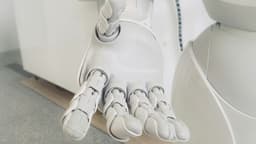Quantum Computing: Unlocking the Power of the Quantum World
Quantum computing represents a significant advancement in technology, using principles of quantum mechanics to create powerful computing systems. These systems can solve complex problems that classical computers struggle to address. This article explains how quantum computing works, the challenges involved in building quantum computers, the power of quantum algorithms, and the impact of Shor's algorithm on cryptography.
The Quantum World
Quantum computing relies on the unique features of quantum mechanics, where matter and energy behave differently compared to everyday experiences. Classical computers use bits to represent information as either 0 or 1, while quantum computers use quantum bits, or qubits. Qubits can exist in multiple states at once due to a property called superposition.
Superposition: The Quantum Advantage
Superposition is crucial to the computational power of quantum computers. Unlike classical bits, which are limited to one state at a time, qubits can represent both 0 and 1 at the same time. This capability allows quantum computers to process more information simultaneously, leading to exponential increases in computational power.
Entanglement: Quantum Connection
Entanglement is another key concept in quantum computing. It occurs when qubits are correlated, such that the state of one qubit can instantaneously affect the state of another, regardless of the distance between them. This feature enables quantum computers to perform parallel computations and exchange information in ways that exceed classical computer capabilities.
Quantum gates manipulate qubits similarly to classical logic gates. By applying sequences of quantum gates to qubits, quantum computers perform complex calculations and solve problems unsuitable for classical computers.
The Quest to Build Quantum Computers
Building practical quantum computers is a challenging scientific and engineering task. Quantum systems are sensitive to environmental conditions, such as temperature changes and electromagnetic interference. Researchers use techniques like cryogenics and error correction to protect qubits and reduce errors.
Various qubit technologies are being explored, including superconducting qubits, trapped ion qubits, and topological qubits. Each technology has its own strengths and challenges, leading researchers to focus on improving qubit quality, scalability, and error rates.
Quantum Computing by Design
In theory, quantum computing harnesses superposition and entanglement to execute calculations much faster than traditional computers. Classical computational power increases linearly with more bits, while quantum power grows exponentially with additional qubits.
Quantum algorithms take advantage of this exponential growth. A well-known quantum algorithm is Shor's algorithm, which solves integer factorization, a problem that classical computers find difficult. Shor's algorithm can factor large numbers significantly faster than classical methods by using the distinct characteristics of quantum computing.
The Significance of Shor's Algorithm
Shor's algorithm is crucial due to its implications for modern cryptography. Public key encryption relies on the difficulty of factoring large numbers with classical computers. Shor's algorithm poses a threat by illustrating that quantum computers could break these encryption systems efficiently.
This potential has spurred research into quantum-resistant cryptographic algorithms. These new methods aim to protect sensitive information from quantum attacks, ensuring security in the post-quantum era.
The Quantum Horizon
Quantum computing represents a major shift in computation, enabling the resolution of complex problems at unprecedented speeds. Its influence spans areas like cryptography, optimization, and drug discovery. While challenges remain, ongoing efforts by researchers and engineers are paving the way for a future defined by quantum technology.












